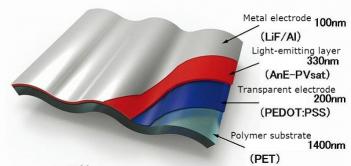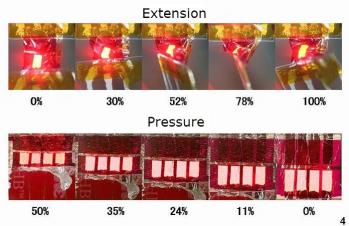Researchers from the University of Tokyo developed a highly-flexible OLED lighting device that can work even after being completely bent and crumpled. They hope that this device can be used for medical and healthcare sensors.

The flexible panel uses a metal electrode (LiF/Al), a transparent PEDOT:PSS transparent electrode and a polymer substrate. The minimum bending radius is 10 micrometer and the brightness of the panel is 100 cd/m2.

The same group already developed a flexible OPV cell to act as an optical sensor and a flexible pressure-sensor (that uses organic TFTs, by the way). Together these three flexible components can be combined to create ultra-thin medical sensors. One possible application is blood oxygen level reader (for this application you need both a light source and a light detector).

